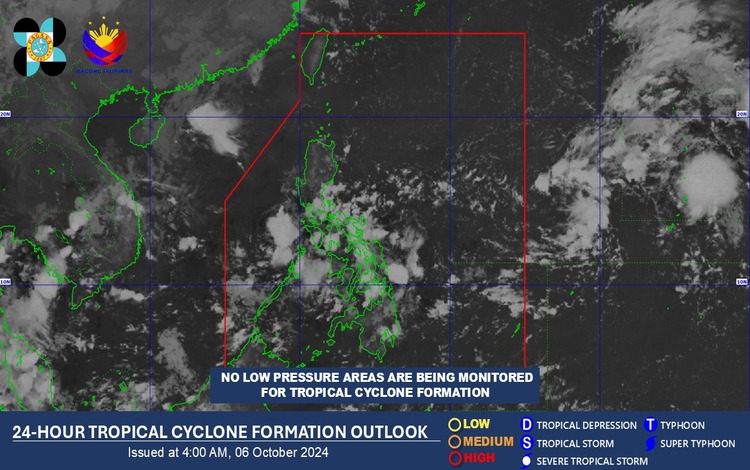On October 6, 2024, the Philippine Atmospheric, Geophysical, and Astronomical Services Administration (Pagasa) reported that the Intertropical Convergence Zone (ITCZ) is currently affecting Southern Luzon, the Visayas, and Mindanao. As a result, several areas in the country are expected to experience scattered rains and thunderstorms throughout the day.

Weather Conditions
The Visayas, Palawan Kalayaan Islands, and Occidental Mindoro will be mostly cloudy to cloudy, with scattered rain showers and thunderstorms. This weather pattern is due to the influence of the ITCZ, which is typical during this time of year as the ITCZ pulls moisture from different parts of the region, forming rain clouds.
Pagasa also indicates that light to moderate winds from the Northeast to Northwest will prevail over Visayas, Occidental Mindoro, and Palawan including Kalayaan Islands. Seas in these areas will remain slight to moderate, making maritime activities relatively safe, though caution is advised due to possible thunderstorms.
Additionally, the Bicol Region, Northern Samar, Oriental Mindoro, Marinduque, and Romblon will also experience cloudy skies with scattered rainshowers and thunderstorms, again due to the ITCZ. Winds in these regions will be light to moderate, blowing from the Northeast to North, with slight to moderate sea conditions.
General Flood Advisories
Pagasa has also issued several flood advisories across various regions due to the potential for heavy rainfall. These advisories serve as a warning to residents in flood-prone areas to stay vigilant.
- Region 4A (CALABARZON): GFA #1
- Region 4B (MIMAROPA): GFA #1
- Region 5 (Bicol Region): GFA #1
- Region 8 (Eastern Visayas): GFA #1
- Region 9 (Zamboanga Peninsula): GFA #5 (Final)
- Region 11 (Davao Region): GFA #7 (Final)
- Region 13 (CARAGA): GFA #7
With the ITCZ affecting several parts of the country, Pagasa advises residents, especially in low-lying areas and near riverbanks, to remain cautious due to possible flash floods and landslides. Those in areas under flood advisories should keep updated with local authorities for any further warnings or necessary evacuations.
